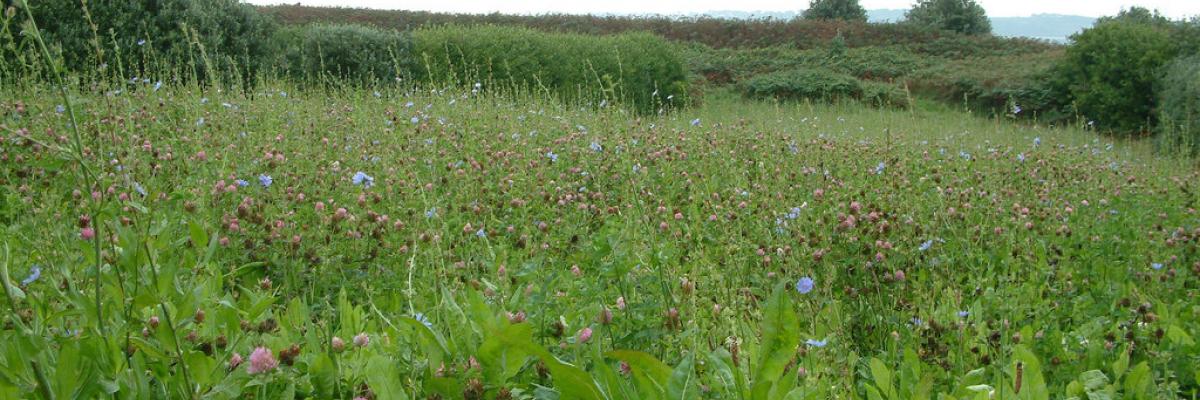

Effects of cutting regime, surroundings & field age on floral resources for pollinators in hay fields
Download the PDF
This abstract (available on Organic Eprints), was presented as a speech at the The Association of Applied Biologists conference “Pollinators in Agriculture” in Brussels, that took place from 1-4 April 2014. It presents findings from the Danish research project EcoServe, in which scientists focused on grasslands that combined economically sustainable food production with high ecological value. The project investigated the extent by which increased richness of selected herbaceous species in organic hay fields acted as a floral resource, enhancing the abundance and biodiversity of pollinators. It also investigated if the availability of floral resources was affected by cutting regimes (in relation to timing and number of cuttings during the growing season). 11 herbaceous species that are often used in grassland seed mixtures were tested. The abstract explains briefly how the surveys and experiments were conducted and what the results showed. Some interesting findings are highlighted.
- The project investigations were based on the knowledge that bees and other flower-visiting insects are experiencing periods of food shortage, particularly in intensively managed agricultural landscapes in Europe.
- The results showed that diversity of pollinators was directly related to the diversity of plants, and that hay fields embedded in a complex landscape harbored a higher diversity of plants and insects than hay fields in more homogeneous areas. The diversity of plants and insects were also found to increase in older hay meadows.
- The abstract provides some interesting insights into the effects of cutting flowering species during the flowering season and provides recommendations for ways in which periods of food shortage for pollinators can be avoided.
- The link within the abstract takes you to a Danish website, however, you can find out more about the project EcoServe, that was co-ordinated by the International Centre for Research in Organic Food Systems (ICROFS), here. As outlined on this page, the purpose of the project was to increase plant biodiversity in grassland and improve ecosystem functions and services in the nature-farmer-consumer chain and for society, and also increase the market value of organic products.
